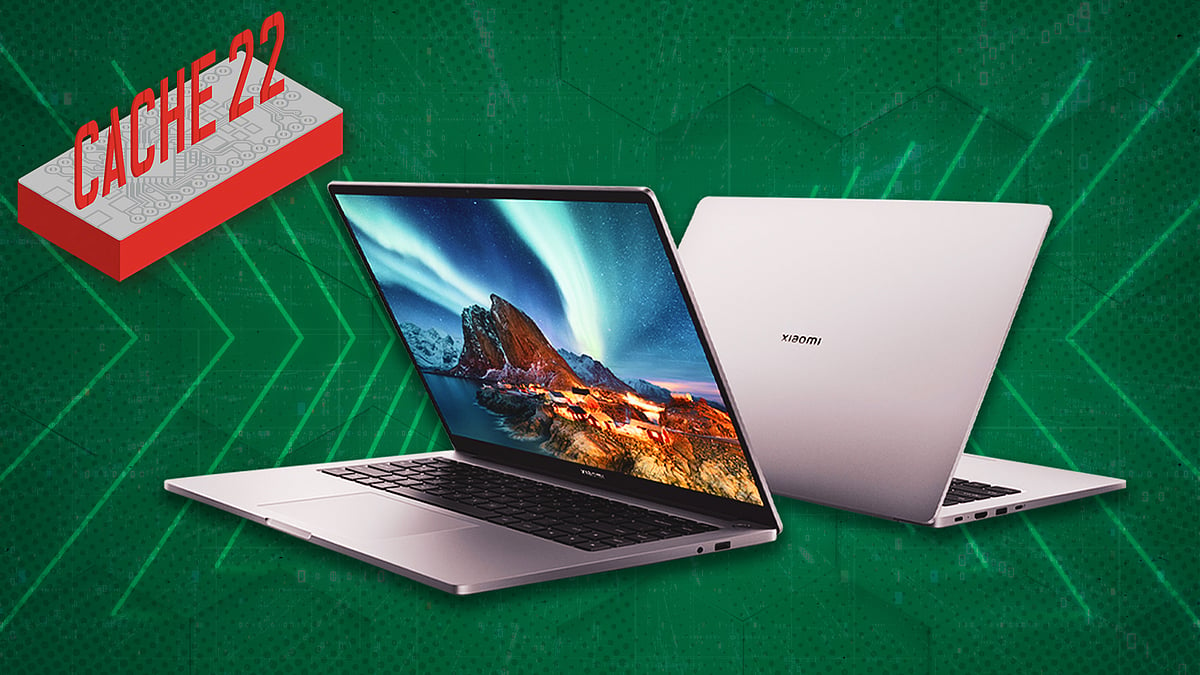Fantastic chips and where to find them: Chips that spark hope amidst the shortage gloom
We take a look at a few new and exciting chips in gadgets that you can buy.
The long-drawn out global shortage of microprocessors has been in the news for so long that the words “chip” and “shortage” are now closely associated in the public imagination. From cars to medical devices to phones and computers, there’s barely any industry that hasn’t felt the impact of the chip shortage to some degree, and there’s no sign of it abating in the near future.
But in the midst of all this gloom, it’s actually a time of some exciting developments in the chip industry. Over the coming year, there are several microprocessors that are going to take the personal tech industry in bold new directions, offering advances in performance, efficiency and capabilities that would have been unheard of even a few years ago. There are new players, old players doing new things, old players collaborating with new players, and every such permutation and combination.
The end result is that there's going to be a greater range of chips in consumer devices than at any time in the recent past. We pick out a few of these exciting chips from different chip designers and tell you what gadgets you’ll find them in.
Now, there are many many kinds of chips in the world, but in this piece, we’re mainly focusing on CPUs, which are perhaps the most critical component of your personal gadgets.
Apple Silicon
This is not a single chip, but a whole line of chipsets from the behemoths at Cupertino. For many years, Apple kept churning out nondescript overpriced laptops, using Intel chips, that lacked in ports and performance. At the end of 2020 they launched their first machines using chips they themselves designed, the first of which was called the M1.
This appeared in a bunch of their models and wowed both the faithful and detractors alike. After almost five years of trying to convince people to not buy Mac laptops, I did a full 180 and started to guide people towards buying them, if they had the budget.
While the M1 was great, the machines they appeared in were still lacking in some key areas, and everyone was waiting for the truly “pro” models to drop.
And drop they have. On October 18, Apple announced Macbook Pro machines featuring the M1 Pro and M1 Max chips, featuring more CPU cores, more GPU cores, more memory, more memory bandwidth, and so on. Add to this the reinstatement of the HDMI port, SD card reader, and the MagSafe connector, and the removal of the Touch Bar, and Apple thoroughly walked back on a whole range of terrible decisions taken over the years.
The first reviews and benchmarks of these chips are out, and they are expectedly phenomenal. Offering performance comparable to desktop CPUs and GPUs from rivals that consume two to three times the power, these are some of the most powerful laptops that money can buy.
But yes, it’s a lot of money. The new Pros start from Rs 1.94 lakh and you can spec them up all the way up to nearly Rs 6 lakh! The cheapest entry point for Apple Silicon, however, is the M1 Mac Mini for Rs 65,000 and for the performance it offers, it’s still a terrific deal.
With the next generation M2 chips expected to drop in 2022 featuring even more powerful cores, Apple is easily the most exciting chip designer operating right now.
Google Tensor
Google is a newbie in the hardware sphere and even newer in the field of microprocessors, but that is precisely why their venture is so exciting. The recently launched Pixel 6 and Pixel 6 Pro phones feature their custom designed Tensor processors for the first time. These are not barnstorming chipsets that are designed to set new records, but carefully thought out processors that play to Google’s strengths and allow them to optimise their devices to get the maximum out of them.
Apart from an unusual CPU configuration, compared to its competitors, it also features a beefy machine learning co-processor that really plays to Google’s AI focus. This means that Google can offer features and capabilities including live translation, live captioning and computational photography that are class-leading. And they’re only getting started. As they gain more expertise and with the Pixel 6 hopefully leading a revival in their hardware sales, the future generations of Tensor chips sound like a mouth-watering prospect.
Now when it comes to buying, unfortunately you can't buy the Pixel 6s in India. But if you’re really keen, you could get someone to bring one down from the US, where it will cost you around Rs 48,000 for the base model and Rs 72,000 for the Pro.
Mediatek Dimensity 2000
Mediatek has been a volume player in the smartphone chipset market. Right now they claim to be the biggest chipmaker in the world. But until now, they’ve never made a top-of-the-line chipset. Their current flagship chipset, the Dimensity 1200, is just about on par with the previous generation flagship from arch-rival Qualcomm.
But this is all set to change.
The Dimensity 2000 is rumoured to feature the latest Arm Cortex X2 prime core, Cortex A710 big cores and the Cortex A510 little cores, and a Mali G710 MC10 GPU. What this essentially means is that on paper they will have a chip that is broadly following the same architecture and same design as the flagship competition from Qualcomm and Samsung.
But what makes this even more interesting is that Mediatek will be manufacturing these chips on TSMC’s 4nm process, while their competitors are doing so on Samsung’s 4nm process. While these sound like they are comparable, history shows us that TSMC’s process offers superior performance, and if that remains the case, Mediatek just might sit at the top of the Android flagship heap for the first time in its history.
The Mali GPU is unlikely to be on par with Qualcomm’s Adreno and will almost definitely trail Samsung’s hotly anticipated AMD designed GPU. But it should still be competitive, and snatching the CPU performance crown would be no mean feat. It’s still uncertain what phones this chipset will appear in, but I wouldn’t be surprised to find it popping up in flagship-grade models from Oppo, Vivo, Xiaomi and the like.
Intel Alder Lake
Intel used to be the last word in personal computer chips, until very recently. If you bought a laptop or desktop, more often than not, you got one with an Intel processor. But with the resurgence of old x86 rival AMD, and with Apple switching to their own powerful silicon, Intel now looks leaden-footed and old.
Intel is the only major company that has a fully integrated chip operation, where they design their own chips and manufacture them. But this has meant that their long-drawn out failure to improve on their manufacturing processes has rendered them vulnerable to their competition. With new CEO Pat Gelsinger on board, and with plans to set up a massive chip fab in Europe that will have first dibs at ASML’s cutting edge chip-printing machines, things are definitely looking promising, in the long term.
But in the short term, they are still trying to get blood from a stone and, in this endeavour, the just launched Alder Lake line-up will be critical to their success. The line-up has launched with a bunch of desktop processors, but will also feature laptop processors in due course.
Alder Lake signifies two significant changes for Intel, firstly they are finally moving their desktop processors from their aging 14nm process to their 10nm process (called Intel 7), and going all-in on a hybrid core configuration with two sets of cores dedicated to high power and low power tasks (more like what Apple and Qualcomm and the others do). This is the biggest leap they have taken in years and how these chips fare against the competition from AMD (and of course Apple) will really determine their near term fortunes.
These chips will be available to buy off the shelf to install in your gaming and workstation desktop rigs, and everyone is waiting with bated breath to see how they perform on benchmarks and in the real world.
Others
There is also great anticipation regarding Samsung’s Exynos 2200 chipset which will use an AMD designed RDNA2 GPU for the first time, potentially bringing it within spitting distance of table-leaders Apple, as far as graphics performance is considered. A variant of this is also expected to make its appearance in laptops, giving the moribund Windows on ARM a shot in the arm.
In the laptop/desktop space there is the rumoured launch of AMD’s 6000 series desktop processors, but even more interestingly AMD’s completely new Zen 4 architecture which is going to be based on TSMC’s 5nm process (which Apple is using for their M1 chips). Zen 4 will launch some time in 2022, but it may be in the latter half of the year, so we have quite a wait yet.
Looking even further, there is also Qualcomm’s expected brand new chips designed by the (mostly ex-Apple) team from Nuvia, which they acquired, as well as some interesting developments based on the open-source RISC-V architecture.
All this adds up to mean that the world of CPUs is looking incredibly competitive and exciting, and as consumers we are going to be spoilt for choice, in the coming years.
Contact the author on Twitter @vinayaravind.
 Mi Notebook Ultra review: A laptop agonisingly close to perfect
Mi Notebook Ultra review: A laptop agonisingly close to perfect Game of phones: A cheatsheet of what phone to buy at every price range
Game of phones: A cheatsheet of what phone to buy at every price range